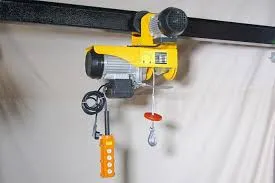


Understanding Fall Protection A Comprehensive FAQ
Fall protection is a critical aspect of workplace safety, especially in industries involving heights such as construction, maintenance, and roofing. Understanding the essential components and regulations surrounding fall protection can help ensure a safe working environment. Below are common questions and answers that can clarify this important topic.
What is Fall Protection?
Fall protection refers to systems, equipment, and procedures designed to prevent workers from falling or to minimize the consequences of a fall. This may include guardrails, safety nets, personal fall arrest systems, and more. The primary goal is to protect workers, especially when they are operating at heights of six feet or more, where the risk of serious injury increases significantly.
When is Fall Protection Required?
Fall protection is necessary whenever workers are exposed to fall hazards. According to regulatory standards, it’s mandatory in various scenarios, including when working on scaffolds, ladders, elevated platforms, and roofs. Employers must assess their work sites to identify potential fall risks and implement appropriate protective measures.
What Are the Types of Fall Protection?
There are three primary types of fall protection
1. Guardrail Systems These are physical barriers installed along edges of platforms, roofs, or other elevated surfaces to prevent workers from falling.

2. Personal Fall Arrest Systems (PFAS) These include harnesses, lanyards, and anchorage points that help to catch a worker in the event of a fall.
3. Safety Nets Installed below the working surface, safety nets catch workers if they fall, providing a secondary line of defense.
How Do Employers Ensure Compliance?
Employers are responsible for following Occupational Safety and Health Administration (OSHA) regulations regarding fall protection. This includes training employees on safe practices, conducting regular inspections, maintaining equipment, and keeping records of injuries and safety measures. Compliance not only ensures worker safety but also protects the employer from legal liabilities.
What Training is Required?
Training is vital for workers who might be exposed to fall hazards. It should cover the proper use of fall protection systems, recognition of fall hazards, and the procedures for safely working at heights. Regular refresher courses and practical demonstrations ensure that workers remain competent and aware of their responsibilities.
What Should Workers Do in Case of a Fall?
In the event of a fall, the affected worker should immediately seek medical attention, even if injuries are not initially apparent. Reporting the incident is crucial for reviewing safety protocols and preventing future occurrences. Employers must investigate the fall, assess the adequacy of protective measures, and make necessary adjustments to enhance safety.
In conclusion, fall protection is not just a regulatory requirement; it is a vital aspect of ensuring safety for workers. By understanding the types of protection available, their requirements, and the importance of training, both employers and employees can create safer work environments. Prioritizing fall prevention ultimately saves lives and supports a culture of safety in the workplace.



